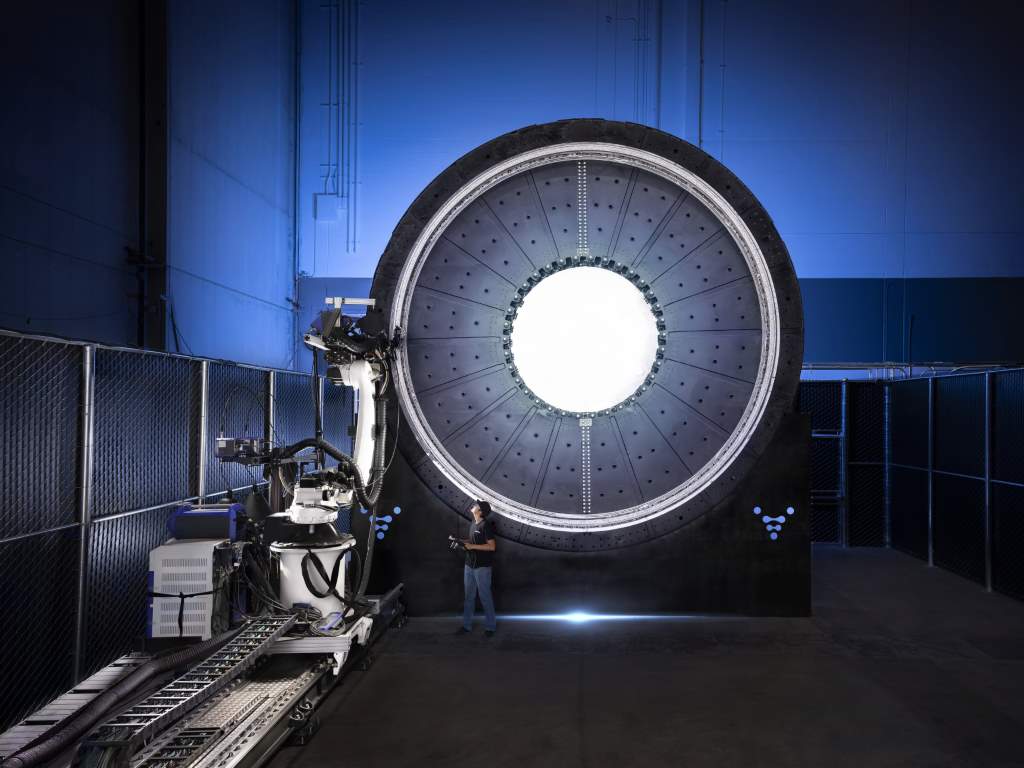3D printed rocket company reveals latest printer technology

Relativity Space, the first company to 3D print rockets, has unveiled the latest iteration of its proprietary manufacturing platform, Stargate 4th Generation metal 3D printers.
These printers will underpin both the development and rate production of Terran R, Relativity’s fully reusable, 3D printed rocket that will be capable of launching 20,000kg to low Earth orbit (LEO).
The newest Stargate printer technology defies traditional printing constraints by moving horizontally as it feeds multiple wires into a single print head to print orbital rockets.
Relativity is developing customised software and machine learning techniques to allow these printers to print more complex and significantly larger metal products, with improved print speed and reliability. Stargate 4th Generation printers also radically simplify manufacturing supply chains, as they are capable of printing a rocket with 100x fewer parts in a matter of months.

With faster iteration cycles, Stargate printers are capable of accelerating progress and innovation within the aerospace industry. Most immediately, Stargate 4th Generation printers will serve as the primary manufacturing infrastructure for Terran R production.
Longer-term, Stargate 4th Generation printers offer tremendous value-generating potential for other end-product use cases within the $1tn+ aerospace, aviation, energy, and defence industries as the core of a new tech stack for aerospace products.
To date, Relativity has secured five customers across $1.2bn+ in customer contracts for Terran R, including a multi-launch agreement with OneWeb and a commercial mission to Mars with Impulse Space.
“Large-scale products that are designed to fly will inevitably be 3D printed,” said Tim Ellis, co-founder and CEO of Relativity Space.
He continued: “The lighter a product is, the better it performs, and when 3D printing that product, it’s also faster and more cost-effective to produce with each successive improvement. The compounding rate of progress is high, and we are still in the early days of what printing can achieve. We see 3D printing as an automation technology that has the power to change the pace of innovation in manufacturing, which is why we’ve invested in building our own proprietary tech stack from day one.
“Stargate printers are designed to unlock rapid iteration, which opens up opportunities for innovation in large-scale manufacturing products. What would take traditional aerospace and space manufacturers years to develop and build, will be reduced down to months due to a highly adaptable, scalable, and automated process, made possible through software-driven manufacturing.”
The majority of Terran R components will be printed inside Relativity’s new headquarters in Long Beach, named The Wormhole.
Aeon R engines, for Terran R, will continue to be produced at the company’s other Long Beach factory, The Portal.
The Wormhole, a former Boeing C-17 manufacturing plant, was secured by Relativity to be its new headquarters in 2021. Currently 33% operational, the factory has several Stargate 4th Generation printers online with more than a dozen printers planned to be producing Terran R components in the coming months. At full capacity forecasted run rate, each Stargate 4th Generation printer is capable of producing 4 Terran R rockets per year.
The remainder of The Wormhole will continue to be built out in phases, bringing more printers online and moving more teams into the company’s headquarters as production for Terran R scales.













